Top 9 Worst Nuclear Disasters of All Time
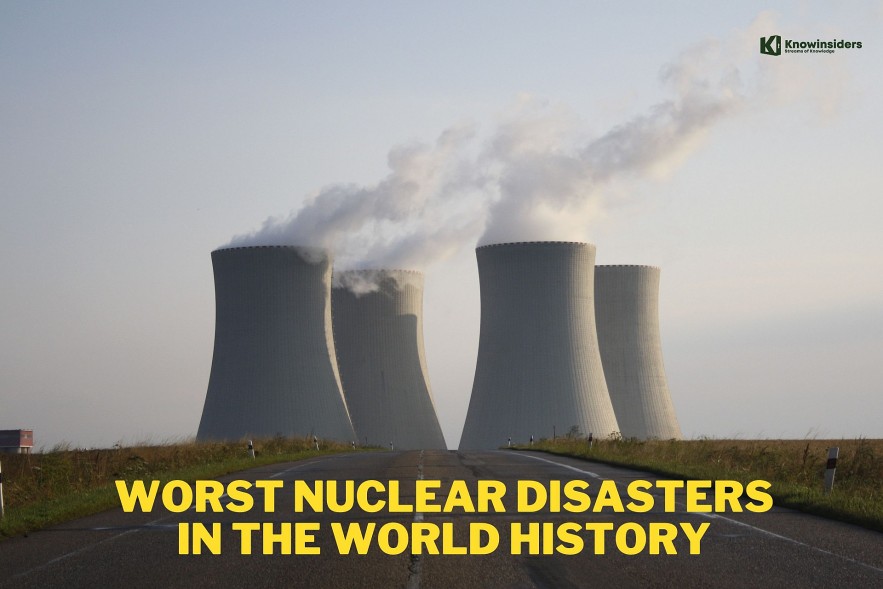 |
| Top 9 Worst Nuclear Disasters In the World History. Photo: KnowInsiders.com |
| Contents |
What is a nuclear disaster?
A nuclear accident is:
An accident that occurs in a facility that uses radioactive sources, such as a nuclear reactor, or in any nuclear facility related to the nuclear fuel cycle that releases a significant amount of radioactivity into the environment.
- A "criticality" accident, similar to the one that occurred at Tokaimura, Japan, in which an uncontrollably initiated nuclear chain reaction results in bursts of neutrons and gamma radiation.
- An incident involving radioactive material being transported.
How are nuclear accidents measured?
The International Nuclear and Radiological Event Scale is used to determine the level of severity of nuclear accidents (INES). This eight-point sliding scale was developed in 1990 by the International Atomic Energy Agency (IAEA) and is comparable to the Richter scale in terms of nuclear physics.
According to the IAEA:
“Events are classified on the scale at seven levels: Levels 1–3 are called 'incidents' and Levels 4–7 'accidents.' The scale is designed so that the severity of an event is about ten times greater for each increase in level on the scale. Events with no significant safety concerns are called 'deviations' and classed as Level 0.”
Here are the five worst nuclear disasters that have shook the world in descending order of magnitude over the last century.
We will organize nuclear disasters based on their rating on the International Nuclear and Radiological Event Scale (INES) rather than their death toll. INES is a set of metrics developed in 1990 to assess the devastation caused by nuclear disasters and meltdowns. Nuclear disasters are classified as follows by INES:
Level 7 - Major Accident
Level 6 - Serious Accident
Level 5 - Accident With Wider Consequences
Level 4 - Accident With Local Consequences
Level 3 - Serious Incident
Level 2 - Incident
Level 1 - Anomaly
Level 0 – Deviation
9 Worst Nuclear Disasters In the World History
1. Chernobyl (Level 7)
 |
| The New Safe Confinement with Chernobyl unit 4 behind it. The 36,000 tonne structure was pushed 327 metres on rails into position over the reactor building in November 2016. (Image: European Bank for Reconstruction and Development) |
The worst nuclear disaster occurred on April 26, 1986, at the Chernobyl nuclear power plant in Ukraine (then part of the Soviet Union).
It is the only nuclear accident in commercial nuclear power history to result in radiation fatalities. Several factors, including reactor design issues and a poor safety culture, contributed to a failed safety test, which resulted in two explosions, a week-long fire, and the release of a large amount of radioactive material.
What caused the Chernobyl disaster?
On April 26, 1986, the Number Four RBMK reactor at the Chernobyl nuclear power plant in Ukraine lost control during a low-power test, resulting in an explosion and fire that destroyed the reactor building and released large amounts of radiation into the atmosphere. Because safety precautions were disregarded, the reactor's uranium fuel overheated and melted through the protective barriers. RBMK reactors lack a containment structure, which is a concrete and steel dome over the reactor that is designed to keep radiation inside the plant in the event of an accident.
As a result, radioactive elements such as plutonium, iodine, strontium, and caesium were dispersed over a large area. Furthermore, as air entered the reactor core, the graphite blocks used as a moderating material in the RBMK caught fire at high temperatures, contributing to the release of radioactive materials into the environment.
How many people were killed as a direct result of the accident?
Two workers were killed in the initial explosion. In the three months following the explosion, twenty-eight firemen and emergency clean-up workers died of Acute Radiation Sickness and one of cardiac arrest.
What was the extent of the radioactive fallout?
Some 150,000 square kilometers of Belarus, Russia, and Ukraine have been contaminated, stretching up to 500 kilometers north of the plant site. The "exclusion zone" is a 30-kilometer radius around the plant that is essentially uninhabited. Wind and storm patterns dispersed radioactive fallout over much of the northern hemisphere, but the amounts dispersed were often insignificant.
| Similar to Hiroshima On April 26, 1986, approximately 30,000 people were in the vicinity of the Chernobyl reactor when it exploded. According to the book "Physics for Future Presidents: The Science Behind the Headlines" (W. W. Norton & Company, 2008) by Richard Muller, a professor emeritus of physics at the University of California, Berkeley, those exposed to the radiation are thought to have received about 45 rem (rem is a unit of radiation dosage), which is similar to the average dose received by survivors after the atomic bomb was dropped on Hiroshima in 1945. |
2. Mihama Nuclear Power Plant - Fukushima Prefecture, Japan (Level 7)
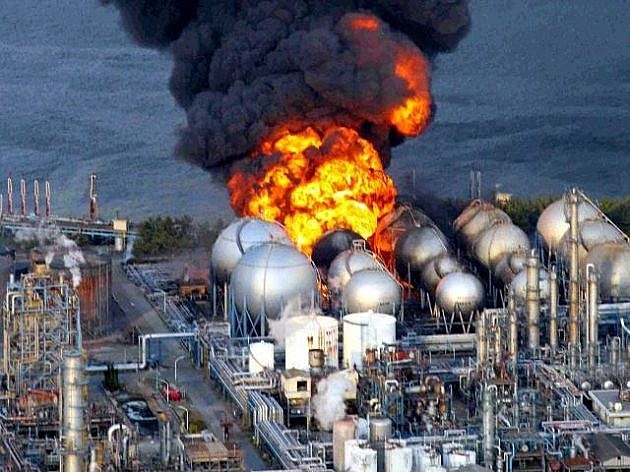 |
| Photo AP |
The 2011 Japan tsunami and earthquake devastated northeastern Japan, killing approximately 15,000 people and leaving thousands injured and missing.
It was the worst earthquake in Japanese history, as well as one of the worst tsunamis in recorded history. To make matters worse, the earthquake caused meltdowns at nuclear power plants in the country's Fukushima Prefecture. Two people were killed as a direct result of the meltdown. The disaster's handling, which many in the public perceived as slow and inadequate, sparked a massive uproar both in Japan and abroad. The Fukushima disaster, like Chernobyl, eroded the world's trust in nuclear power. Several countries around the world, including Germany and Italy, have pledged to either close or stop building new nuclear power plants. However, nuclear power remains dominant in some countries, including India and Russia.
| 28 percent of pale grass blue butterflies in the region had abnormalities like changed wing patterns and deformed antennae and legs six months after the Fukushima meltdown. In 2012, the first-ever study on radiation exposure in wild primates discovered that, in comparison to monkeys in other parts of Japan, those living close to Fukushima had noticeably lower red and white blood cell counts. |
3. Windscale on October 10, 1957 (Level 6)
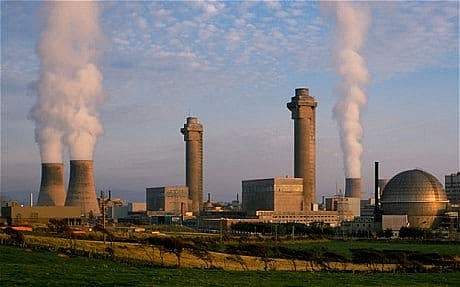 |
| Photo srp-uk |
Britain's first nuclear reactor, called Windscale, was constructed in northwest England in the late 1940s with the intention of producing plutonium and other materials for the nation's expanding nuclear weapons program. On October 10, 1957, workers at the massive facility noticed that the temperature was rising while performing routine maintenance.
They found that the reactor's uranium-filled graphite core had caught fire after doing more investigation. Plant operators risked their lives to use water, carbon dioxide, and cooling fans to put out the fires when the reactor was about to collapse. By October 12, when the fire finally went out, radioactive clouds had begun to spread throughout Europe and the United Kingdom.
4. Kyshtym, Russia in 1957 (Level 6)
The United States was the world's leading nuclear power in the years after World War II. The Soviet Union swiftly constructed nuclear power plants and made cost reductions in an attempt to catch up.
Because of this, the tank at the Mayak plant near Kyshtym had a subpar cooling system. When this system failed, the rising temperature led to an explosion that contaminated nearly 500 miles of the surrounding area.
The Soviet authorities had little choice but to reveal what had transpired a week later, even though they had initially chosen not to. Ten thousand people were taken out of the area when some started exhibiting symptoms of radiation sickness. A study published in Radiation and Environmental Biophysics suggests that at least 200 people may have died from radiation exposure, despite the Soviet government's refusal to provide any information about the accident. In 1990, information about the catastrophe was finally declassified by the Soviet government.
5. Three Mile Island, Pennsylvania in 1979 (Level 5)
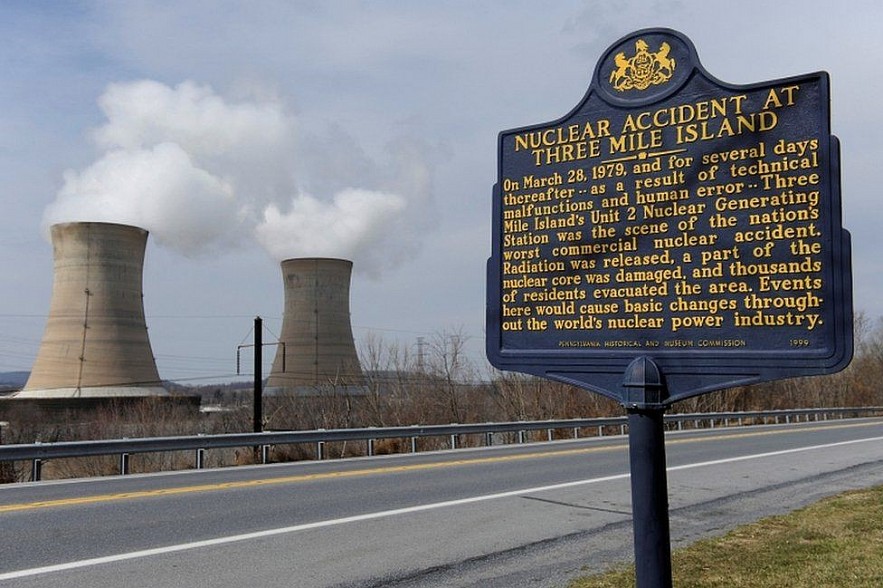 |
| Photo BBC |
The Three Mile Island nuclear station in Pennsylvania experienced the most catastrophic accident in the history of commercial nuclear power plant operations in the United States. A tiny amount of radioactive material was released when the Unit 2 reactor of the power plant partially melted down due to a combination of malfunctioning equipment and operator error.
The accident resulted in no direct health effects, fatalities, or injuries.
The Nuclear Regulatory Commission (NRC), the U.S. Department of Energy (DOE), the Environmental Protection Agency, the Department of Health, Education and Welfare (now Health and Human Services), and the Commonwealth of Pennsylvania carried out in-depth studies of the accident's radiological effects after it happened.
| No adverse effects to the surrounding environment Concerns regarding potential harmful effects of radiation exposure on local residents, animals, and vegetation were voiced months after the incident in the vicinity of Three Mile Island. Thousands of environmental samples of the air, water, milk, plants, soil, and food items were gathered by various government agencies that were keeping an eye on the region. The accident was found to have caused very low levels, and the radioactive release had very little impact on either the environment or people's physical health. |
6. Goiania Accident, Brazil in 1987 (Level 5)
In Goiania, Brazil, there was a nuclear incident on September 13, 1987. The primary cause of the accident was radioactive contamination of a hospital equipment that had been abandoned. Despite being a level 5 accident, the incident is regarded as one of the top 10 nuclear disasters to date.
It was unknown to the two ruthless scrap-metal thieves who broke into an abandoned Brazilian hospital in 1987 that they would set off one of the worst nuclear contamination incidents in history. Once the robbers had taken apart outdated medical equipment, they discovered a radiation capsule used for teletherapy. They started disassembling the device with a screwdriver, sharing the glowing blue substance with friends and family before selling the metal, all without realizing how dangerous the substance was.
The source of the radiation was not identified until locals started getting sick, at which point it was discovered that 249 people had significant radioactive contamination. The incident directly resulted in the deaths of four people, and in the aftermath, multiple houses were destroyed.
7. Chalk River Reactor Accidents (Level 5)
At Chalk River, Ontario, there were two pretty significant nuclear reactor accidents back in the 1950s.
The first happened in 1952 when the NRX reactor experienced a strong power outage that destroyed the reactor's core and partially melted fuel. Regretfully, the shut-off rods did not go all the way down into the core. The four-ton gasholder dome was propelled four feet through the air by a sequence of hydrogen gas explosions, also known as steam explosions, and then it became trapped in the superstructure. A million gallons of radioactively contaminated water had to be pumped out of the basement and "disposed of" in shallow trenches not far from the Ottawa River.
Thousands of curies of fission products were released into the atmosphere. The NRX reactor's core had to be buried as radioactive waste because it was impossible to decontaminate. Following the accident, hundreds of servicemen from Canada and the United States were ordered to take part in the NRX cleanup. Later, Jimmy Carter would become the President of the United States and a nuclear engineer in the U.S. Navy.
A number of the metallic uranium fuel rods in the NRU reactor overheated and burst inside the reactor core six years later, in 1958. As a robotic crane was removing one of the damaged rods from the core, it caught fire and split in two. A three-foot length of uranium fuel, burning fiercely, broke off and fell into a shallow maintenance pit as the remote-controlled crane passed overhead, carrying the larger portion of the damaged rod.
There, the burning fuel dispersed particles that released alpha radiation and lethal fission products throughout the reactor building. Because the ventilation system was stuck in the "open" position, a considerable area downwind from the reactor site and the building's accessible sections were contaminated. Ultimately, a relay team of technicians and scientists put out the fire by racing past the maintenance pit at top speed while fully equipped with safety gear and dousing the uranium fuel in flames with buckets of wet sand.
8. Tokaimura, Japan 1999 (Level 4)
Disaster struck when a group of inexperienced workers decided to add more highly enriched uranium to a precipitation tank than was authorized. After fifty-six plant workers were exposed to high levels of radiation, two of them eventually passed away.
To exacerbate the situation, residents within a thousand feet of the plant were evacuated, and 21 civilians were also exposed to high doses of radiation.
9. Saint Laurent Nuclear Accidents on March 19, 2017 (Level 4)
The Saint Laurent nuclear facility suffered a calamity in 1969. The facility is made up of two graphite-moderated, gas-cooled reactors (GCR) called A1 and A2 (see Fig. 1). The uranium that was required for the nuclear reaction to occur melted and partially melted on October 17, 1969.
As a result, workers had to spend a full year, frequently in an extremely radioactive environment, cleaning and repairing the reactor. The gas-graphite program was discontinued in France as a result of this accident and a statement made by Marcel Boiteux, the president of Électricité de France (EDF), declaring that France would no longer use GCRs. This unprecedented event in French history did not alter the country's future nuclear development trajectory. Government officials in France retreated as they used the enormous energy produced by nuclear power to justify the accident.
The Saint Laurent plant had another nuclear accident almost ten years later. This one was on par with the 1969 accident, scoring four out of seven on the International Nuclear Event Scale. A metal plate obstructing six to eight stack channels caused two fuel elements to melt, forcing Reactor A2 to be shut down for a period of two and a half years. *[4] When further details regarding the 1980 incident and the cleanup at Saint Laurent A2 were sought, Inspector General for Nuclear Safety and Protection Andrá Gauvenet supplied none. All he said was that there was no environmental radioactive leak as a result of the accident.
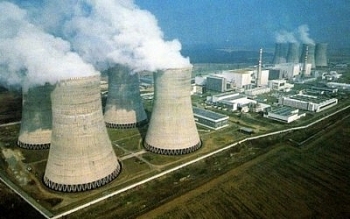 What is the Ukraine’s Largest Nuclear Plant with 6 Reactors What is the Ukraine’s Largest Nuclear Plant with 6 Reactors Fire breaks out at the Zaporizhzhia nuclear plant that has six out of Ukraine’s 15 nuclear energy reactors. |
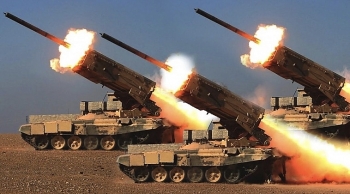 TOS-1: Russia's Most Powerful Non-Nuclear Weapon in Ukraine Battlefield TOS-1: Russia's Most Powerful Non-Nuclear Weapon in Ukraine Battlefield The TOS-1 thermobaric rocket system is said to be one of the "unique" weapons that the Russian military uses on the Ukrainian battlefield. |
 Top 13 Worst Natural Disasters In the World History Top 13 Worst Natural Disasters In the World History What do you think of when we mention 'natural disaster'? Tsunami? Earthquake? Tornado? What natural disaster is the most deadly in the history? Let's explore ... |
























